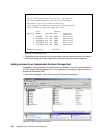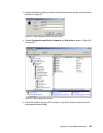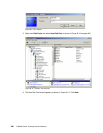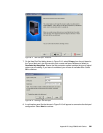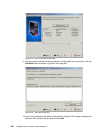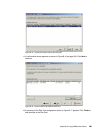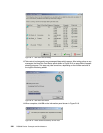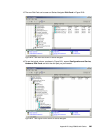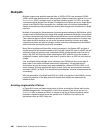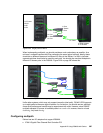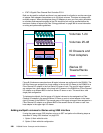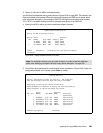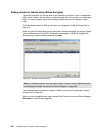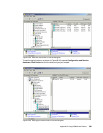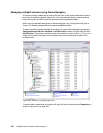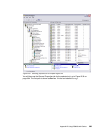386 DS8000 Series: Concepts and Architecture
Multipath
Multipath support was added for external disks in V5R3 of i5/OS (also known as OS/400
V5R3). Unlike other platforms which have a specific software component, such as
Subsystem
Device Driver
(SDD), multipath is part of the base operating system. At V5R3, up to eight
connections can be defined from multiple I/O adapters on an iSeries server to a single logical
volume in the DS8000. Each connection for a multipath disk unit functions independently.
Several connections provide availability by allowing disk storage to be utilized even if a single
path fails.
Multipath is important for iSeries because it provides greater resilience to SAN failures, which
can be critical to OS/400 due to the single level storage architecture. Multipath is not available
for iSeries internal disk units but the likelihood of path failure is much less with internal drives.
This is because there are fewer interference points where problems can occur, such as long
fiber cables and SAN switches, as well as the increased possibility of human error when
configuring switches and external storage, and the concurrent maintenance on the DS8000
which may make some paths temporarily unavailable.
Many iSeries customers still have their entire environment in the System ASP and loss of
access to any disk will cause the system to fail. Even with User ASPs, loss of a UASP disk will
eventually cause the system to stop. Independent ASPs provide isolation such that loss of
disks in the IASP will only affect users accessing that IASP while the rest of the system is
unaffected. However, with multipath, even loss of a path to disk in an IASP will not cause an
outage.
Prior to multipath being available, some customers used OS/400 mirroring to two sets of
disks, either in the same or different external disk subsystems. This provided implicit
dual-path as long as the mirrored copy was connected to a different IOP/IOA, BUS, or I/O
tower. However, this also required two copies of data. Since disk level protection is already
provided by RAID-5 or RAID-10 in the external disk subsystem, this was sometimes seen as
unnecessary.
With the combination of multipath and RAID-5 or RAID-10 protection in the DS8000, we can
provide full protection of the data paths and the data itself without the requirement for
additional disks.
Avoiding single points of failure
In Figure B-22, there are fifteen single points of failure, excluding the iSeries itself and the
DS8000 storage facility. Failure points 9-12 will not be present if you do not use an
Inter
Switch Link
(ISL) to extend your SAN. An outage to any one of these components (either
planned or unplanned) would cause the system to fail if IASPs are not used (or the
applications within an IASP if they are).



